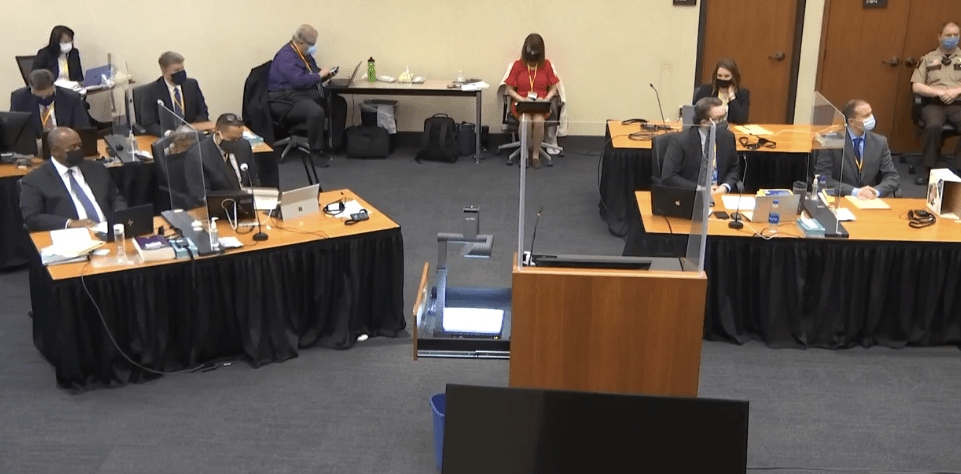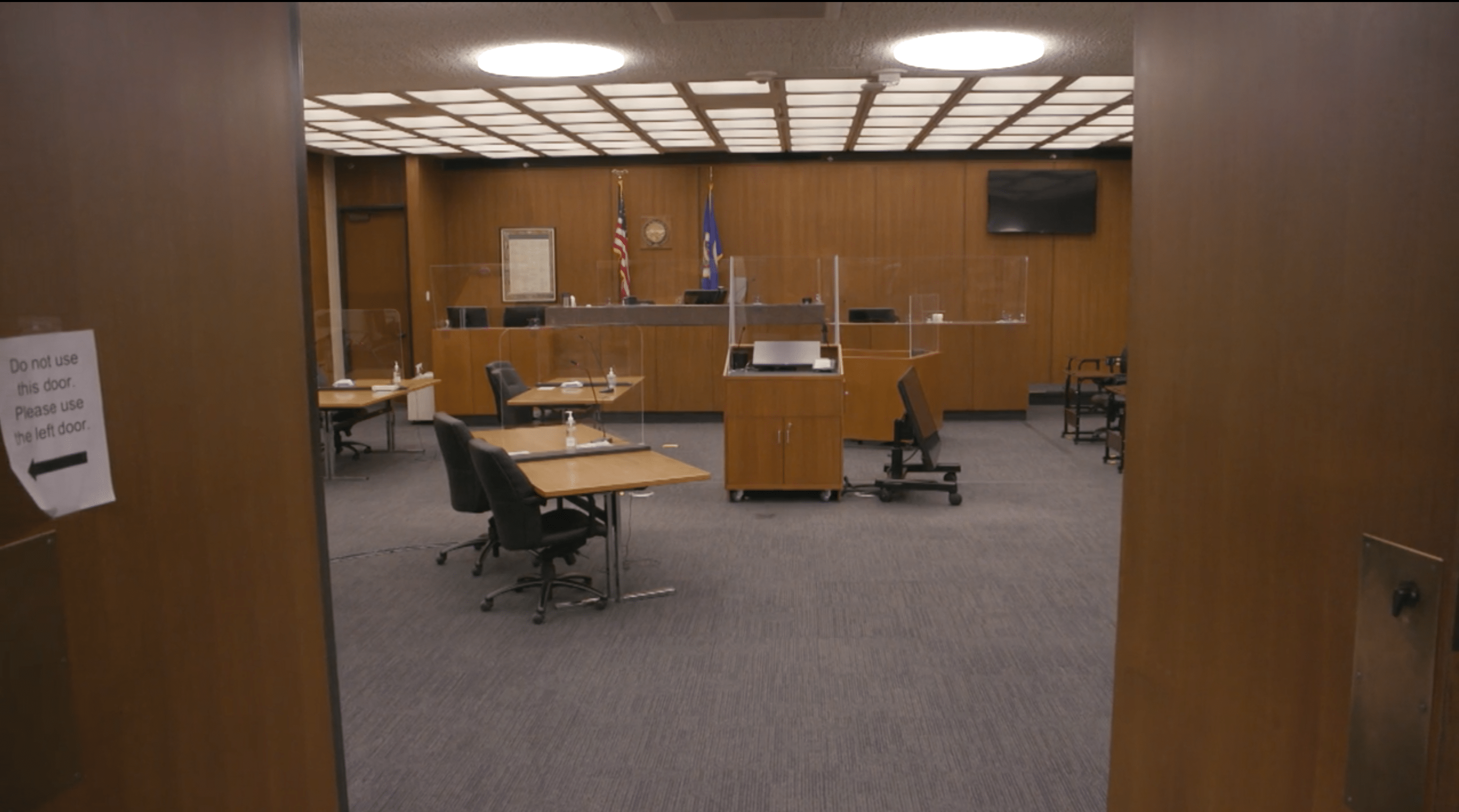Chauvin trial eases concerns of courtroom camera skeptics

Go Deeper.
Create an account or log in to save stories.
Like this?
Thanks for liking this story! We have added it to a list of your favorite stories.
The trial of Derek Chauvin — livestreamed and televised around the world — broke new ground in Minnesota, and the experiment changed the minds of some who’d been skeptical of cameras in the courtroom.
In August, the public will have another opportunity to watch in real time as prosecutors lay out their case against officers who were involved with George Floyd’s fatal arrest.
Hennepin County District Judge Peter Cahill is allowing the trial of former Minneapolis police officers J. Alexander Kueng, Thomas Lane, and Tou Thao to be recorded and televised. The three are charged with aiding and abetting second-degree murder and manslaughter in the death of George Floyd.
A Hennepin County court spokesperson said that Cahill’s initial order allowing Chauvin’s trial to be broadcast also applies to the second trial, which is scheduled to begin Aug. 23.
Turn Up Your Support
MPR News helps you turn down the noise and build shared understanding. Turn up your support for this public resource and keep trusted journalism accessible to all.

There were no major problems with the live broadcast of Chauvin’s trial, which began March 8 with motion hearings followed by a nearly three-week jury selection process. It concluded April 20 after Cahill announced the guilty verdicts. It was the first time that a Minnesota criminal trial had been televised.
In contrast to the open media access in Wisconsin, Iowa, and other states, Minnesota courts have traditionally prohibited cameras. Three years ago, the Minnesota Supreme Court started allowing TV coverage of sentencing hearings. But the rule still bans cameras at trial unless both the prosecution and defense consent.
Chauvin’s attorney welcomed the livestream early on, but Minnesota Attorney General Keith Ellison, whose office prosecuted the former officer, did not. Among other things, his team argued that witnesses might be afraid to testify. But five days after jurors convicted Chauvin, Ellison told WCCO-TV that his fears did not come to pass.
“I thought it would alter the way the lawyers handled the case and handled the evidence. But it went pretty well. I was very grateful that Judge Cahill allowed the juvenile witnesses to not be on camera,” Ellison said.
Cahill’s order also prohibited jurors’ faces from being televised, but their voices were broadcast during the jury selection process.
Hennepin County Chief Judge Toddrick Barnette told MPR News that he too was a longtime skeptic of cameras in the courtroom.
“I was in law school when the O.J. Simpson trial was being televised, so I have that as one of my reference points,” Barnette said.
Social distancing requirements and the enormous global interest in the case led Judge Cahill to sidestep the rules — to uphold both Chauvin’s constitutional right to a public trial and the media’s right to cover it.

Barnette met with journalists and media attorneys ahead of time and worked closely with Court TV, which operated the cameras and provided its video feed to other outlets.
“Over time, I felt more comfortable that they were really interested in the integrity of the process, and worked very hard to make sure there were no violations of Judge Cahill’s order,” Barnette said.
Barnette said one of the biggest benefits of televising the trial was that the public learned about the entire process, from jury selection to the final verdict.
Mary Moriarty, who spent more than 30 years as a public defender, said she was never a proponent of televising court proceedings. She said judges sometimes play to the cameras to appear tough on crime, the added publicity can intimidate witnesses and jurors, and going on TV in an orange jumpsuit is never good for the defendant.
Moriarty initially opposed televising Chauvin’s trial. But now, nearly two months later, she said her views are more nuanced.
“I think it was important for people to see what happened, what the witnesses said, what the lawyers said, what the judge did, for the legitimacy of the process,” Moriarty said.
She said the success with broadcasting the Chauvin trial may open the door to increased camera access. But it’s unclear if the Minnesota Supreme Court will reconsider its rules.

Putting Chauvin’s trial on TV ensured that the case would be front and center in the public’s consciousness. Coverage of the trial would have had far less impact without the ability to hear the voices and see the faces of the attorneys, witnesses, and Chauvin himself. Twin Cities TV stations swapped out their usual daytime lineup of soap operas and talk shows to provide live coverage.
But all this attention amplified anxiety in a community already traumatized by seeing Floyd’s murder played on social media repeatedly for the last 11 months, said Carl Young, a mental health counselor who works with Black youth in Minneapolis.
“They are frustrated, and they are angry. And they have not had an outlet to voice any of those things,” Young said.

A jury of seven men and five women convicted Chauvin last week of second- and third-degree murder and second-degree manslaughter for killing Floyd, who died as the former officer knelt on his neck for more than nine minutes. Chauvin will be sentenced June 25.
As Chauvin’s trial wrapped up, a white police officer in Brooklyn Center shot and killed Daunte Wright, 20, an unarmed Black man, as he fled a traffic stop. And just as Cahill was about to declare Chauvin guilty, a 16-year-old Black girl, Ma’Khia Bryant, died at the hands of police in Columbus, Ohio. Young said these killings and others only compounded the anguish.
“It’s hard to heal,” Young said. “How can you heal when you keep getting re-traumatized over and over and over again?”
To help people process this trauma, Young has been organizing community healing events around Minneapolis. The gatherings include music, a shared meal, and opportunities to connect one-on-one with mental health professionals.
Young was not among the estimated 23 million people who watched on TV as Cahill read the verdict. For many, it was a moment of relief and elation. But Young said he was in no mood to celebrate, noting that it took sustained work by activists and a highly public trial to hold a white former officer accountable for the murder of a Black man.


